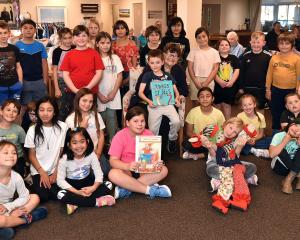
Had I turned the book over, I would have been slightly more interested; an image from a 15th-century Italian fresco and a description of the book as a ''fast-moving genre-bending conversation between forms, times, truths and fictions''.
I certainly would not have expected that, having received this book for review, I would read it twice in quick succession.
Perhaps this was in part because in buying How to be both you have the choice of two versions. Each version interweaves two stories; that of Francescho, a renaissance Italian artist forced to disguise the fact she is a female due to the social mores of the time, and that of George, a 20th-century teenage girl struggling to find her identity in the heaving chasm left by her mother's unexpected death.
The two stories, although distinct, are connected through art, love and longing, and are identical in each version.
The version I read first began with Francescho as she is wrenched through time and space to shadow George in modern London. We are never told Francescho's real name, only that this is a pseudonym taken to mask her female identity and allow her to paint in the courts and halls of Italy.
As Francescho follows George she recollects fragments of her own journey to fame and patronage in the fiercely competitive artistic circles of Renaissance Italy. Passionate in art and love, Francesco del Cossa was in fact a real artist who was so proud of her work (some could say to the point of conceit), that he/she requested a higher rate of pay than other artists.
Blending fact and fiction, Smith devises an ending for this true conundrum based on her interpretations of Francesco del Cossa's surviving art. In the meantime, George is struggling to come to terms with her mother's death while caring for her younger brother and avoiding her alcohol-dependent father.
George is torn between her teenager's desire to fit in and her mother's emphatic cry for her to ''always be gauche''. A child of the '60s, George's mother was fiercely feminist and decidedly unconventional; taking George and her brother to Italy on a whim to see the Palazzo Schifanoia, where Francesco del Cossa's frescos can still be seen today.
But George's last memories of her mother are tainted by her mother's apparently outrageous belief that she was being watched, and in the midst of all this turmoil George makes friends with Helena Fisker, a fellow student who offers more than friendship.
I have always enjoyed rereading books to see what new insights are delivered, yet reading the other version, starting with George's tale, what became most apparent was the way in which the order of George and Francescho's stories subtly influences your appreciation of the whole.
The more you read How to be both, the more convoluted it becomes. Francescho is a woman forced to bind her chest and present herself as a man, yet who is welcomed by the prostitutes at a nearby brothel.
In contrast, George is a boy's name given to a girl just coming into her own sexuality, but when Francescho first sees her she thinks George is a boy.
Truth and fiction are inexorably mixed; Francesco del Cossa was a real artist whose works can be seen in art galleries and on the walls of the Palazzo Schifanoia in Italy, yet little is known about him.
Subsequently, when George and her friend Helena decide to do a project on del Cossa they realise they will have to make most of it up, reflecting the dilemma faced by Smith, the author.
And just as George's mother believed she was being watched, now George is watching the watcher, Francescho is watching George, and we (the reader) are watching Francescho.
How to be both was shortlisted for the 2014 Man Booker Prize, and I can see why. What on the face of it appears to be a lighthearted, teasing read reveals itself to have greater depths.
There were moments when cleverness seemed to get away on itself, such as the reading of Francesco del Cossa's art. However, this in no way detracts from a novel that continues to develop the more it is read.
Maria van't Klooster is an avid Dunedin reader.












